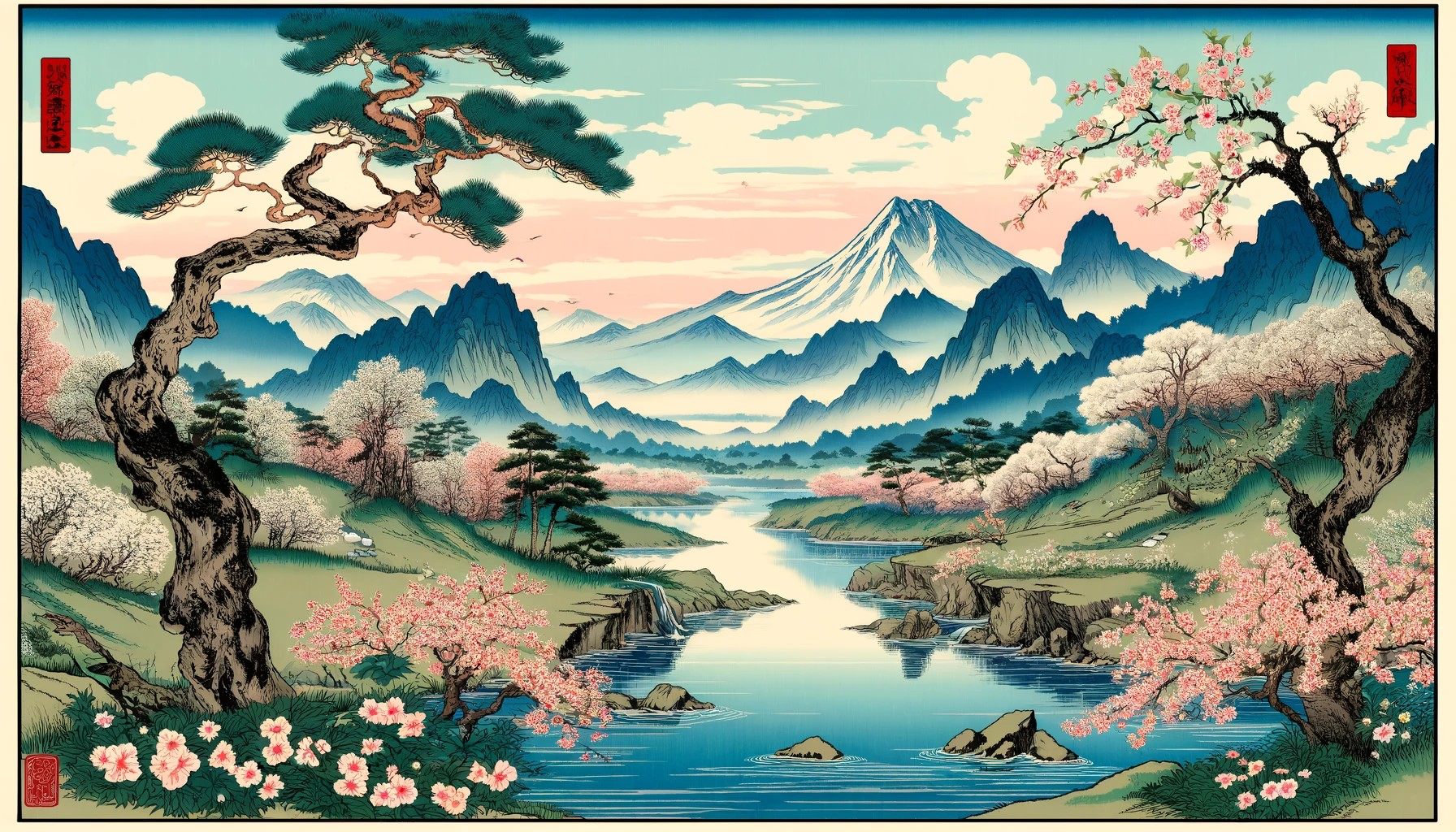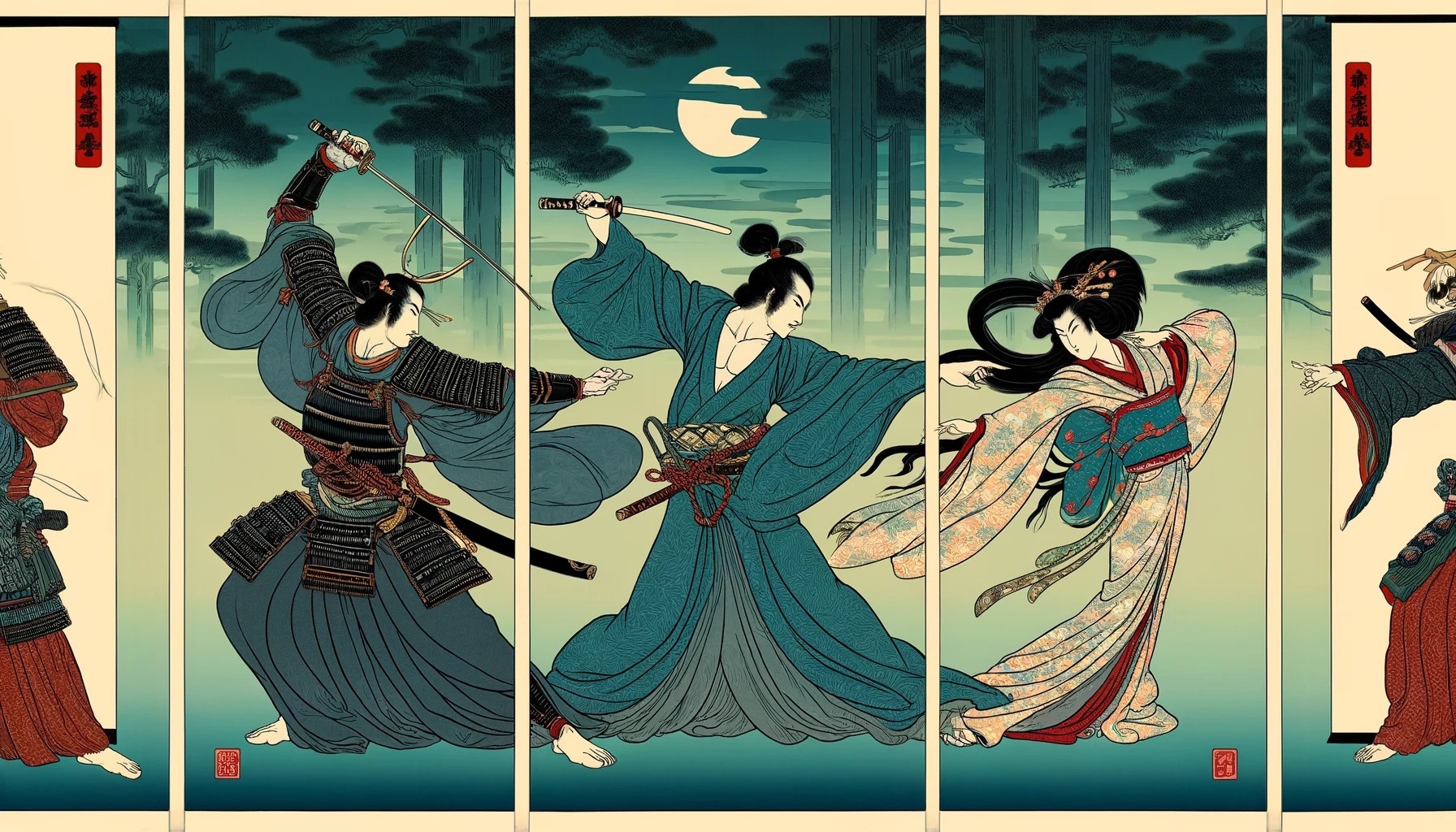Ogata Gekkō (1859 ~ 1920)
Ogata Gekkō (尾形月耕), born in Edo (now Tōkyō, 東京) as Nakagami Shōnosuke (名鏡 正之助) in a merchant family, found himself earning a living
by designing and selling rickshaw illustrations at the age of sixteen, following his father's death. Gekkō grew up as a self-taught artist and
promoted himself by selling his services as an illustrator for books and newspapers and as a designer of frontispieces. However, he was also
influenced by the work of the great classical painter Ogata Kōrin (尾形光琳), whose artistic legacy, the Ogata school, recognized Gekkō's talent,
allowing him to use their name.
Ogata Gekkō broke with the conventions of traditional ukiyo-e prints, introducing a unique style that required printers to adapt techniques typical
of watercolor and oil painting to woodblock printing. This often caused technical difficulties, as his designs did not follow the clear separation of
lines and colors typical of ukiyo-e.
Despite not achieving the fame or earnings of artists like Yoshitoshi (芳年), he was one of the first Japanese artists to be recognized internationally.
Specializing in kacho-e (花鳥絵, images of flowers and birds), Gekkō mastered the depiction of the details of bird feathers, and also worked as a decorator
of lacquerware and pottery.
After the outbreak of the Sino-Japanese War, Gekkō began creating war prints. As a war correspondent for a newspaper company, he followed the troops to the battlefields,
made sketches of the battle scenes, and turned them into prints back in Japan. Gekkō favored a variety of subjects in addition to reporting on the war: flowers and birds,
landscapes, beauties, animals, and family scenes. His print series "Beauties at Famous Places" was published in the early 20th century. He received a gold medal at the 1904
St. Louis World's Fair for selections from his landscape series "One Hundred Views of Mt. Fuji" (富士百景). Gekkō perfected his Japanese woodblock print style over the course
of his career, blending ukiyo-e printing, nihonga (日本画, Japanese-style painting), Shijō-style painting, and Chinese painting. His rich artistic background and unique approach
to printmaking give his works an appearance more akin to a painting than a traditional print. Other artist names used by Gekkō include Kagyosai, Meikyosai, Nen’yu, and Rosai.
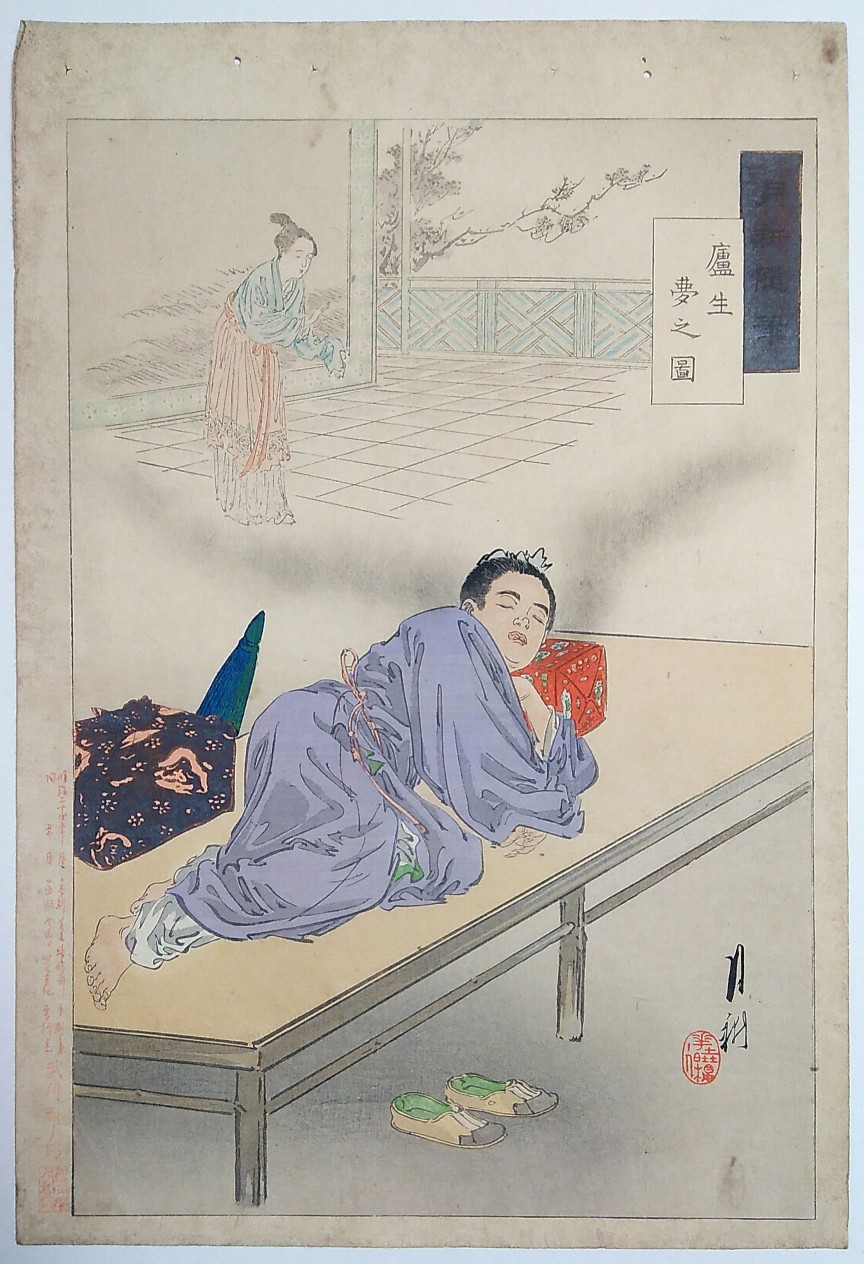
Rosei`s dream
Gekkō zuihitsu
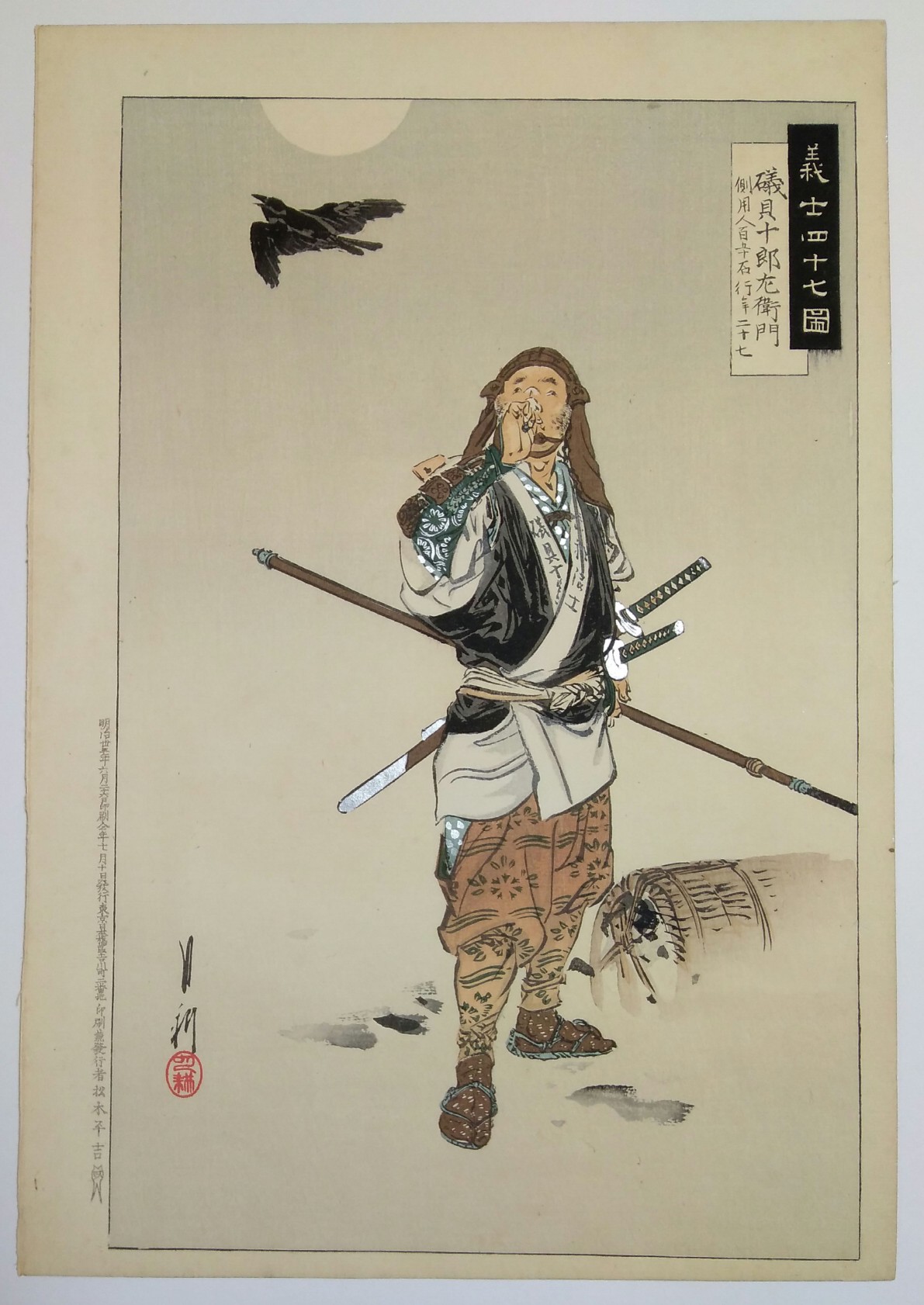
Ishogai Jurozaemon
Forty-seven pictures of loyal retainers
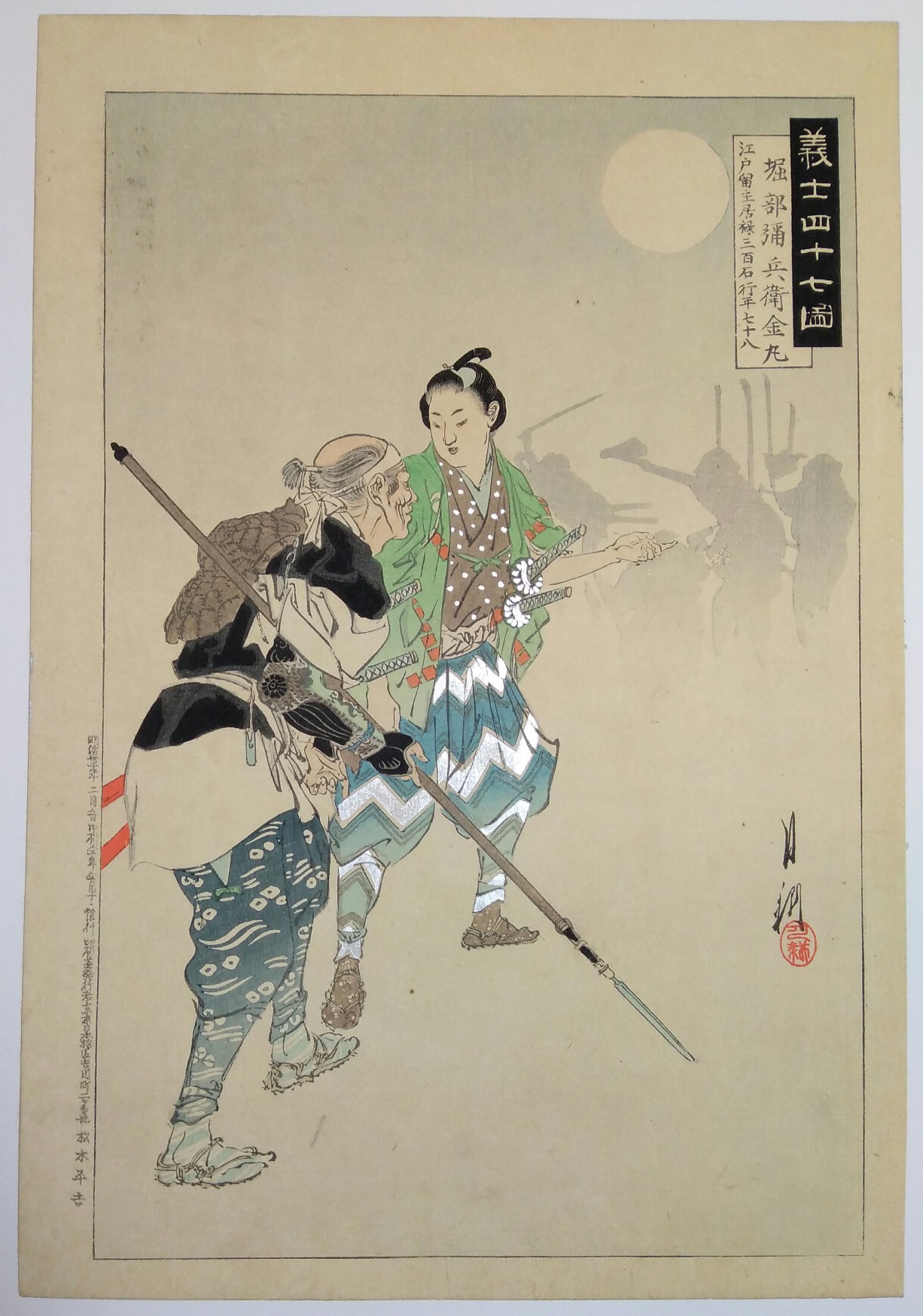
Horibe Yahei Kanamaru
Forty-seven pictures of loyal retainers
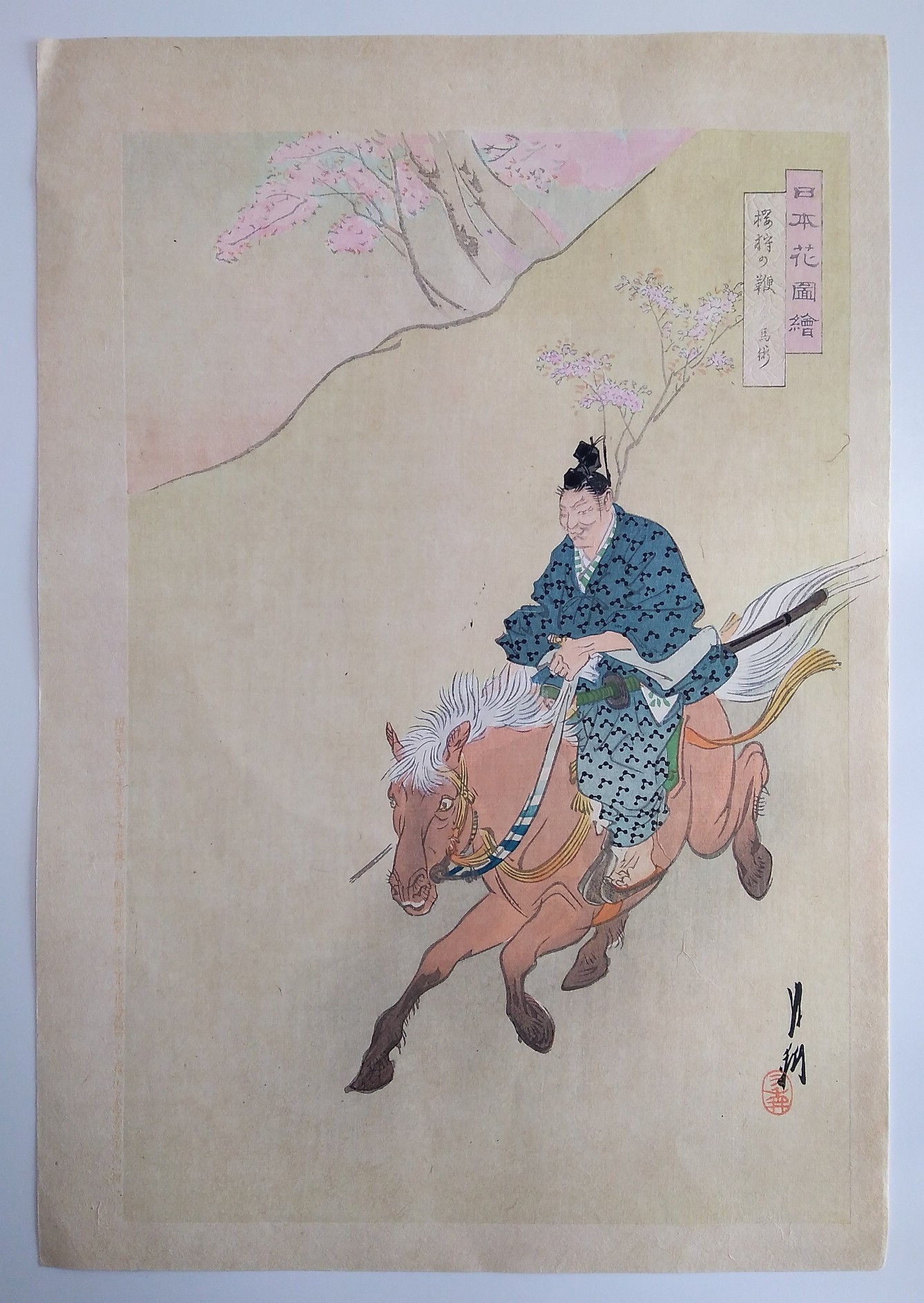
The whip hunting for the cherry blossom
Horsemanship
Pictures of flowers of Japan

Sakurai station
Farewell of Lord Kusunoki
Pictures of flowers of Japan
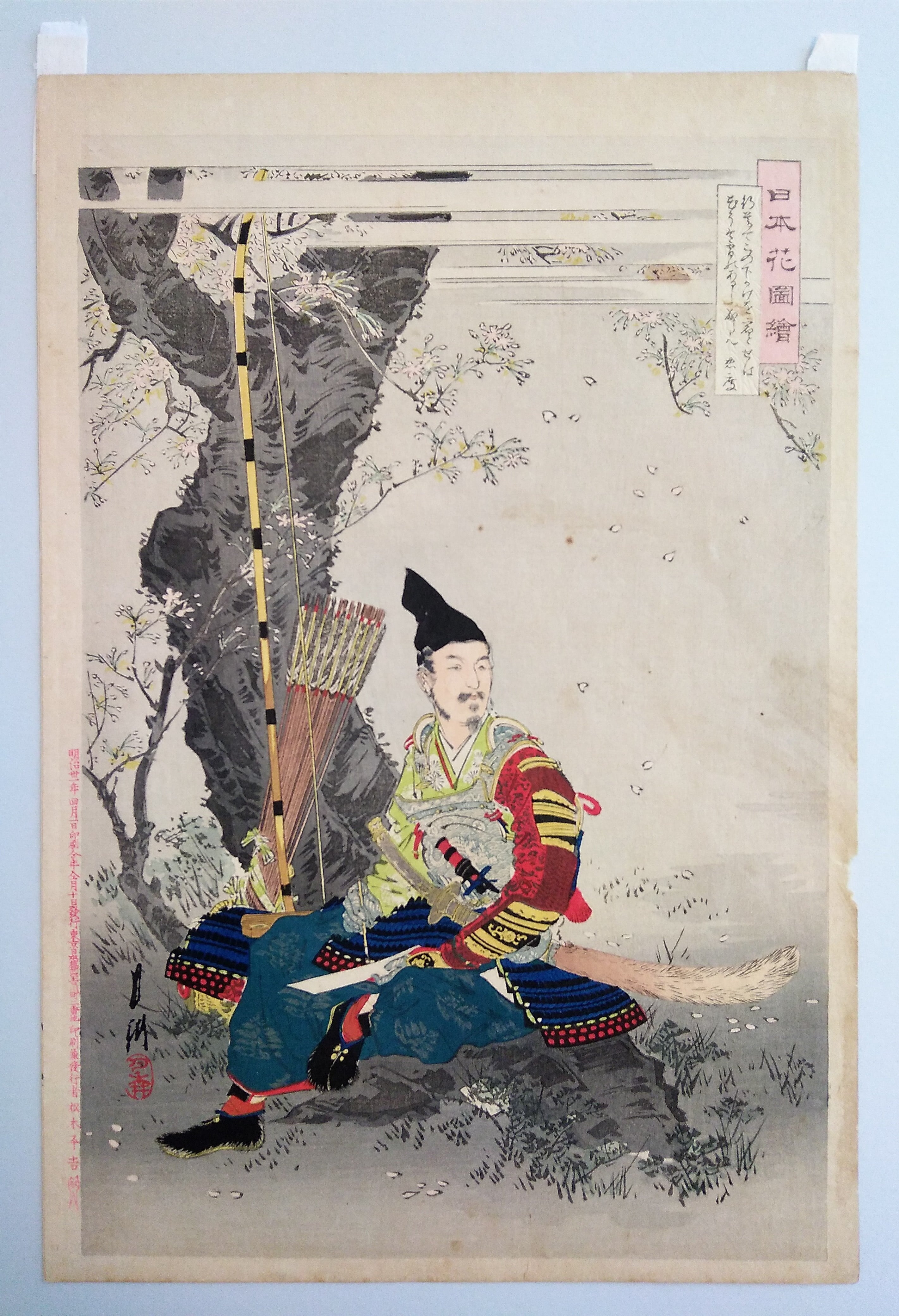
Bow and arrows
Pictures of flowers of Japan
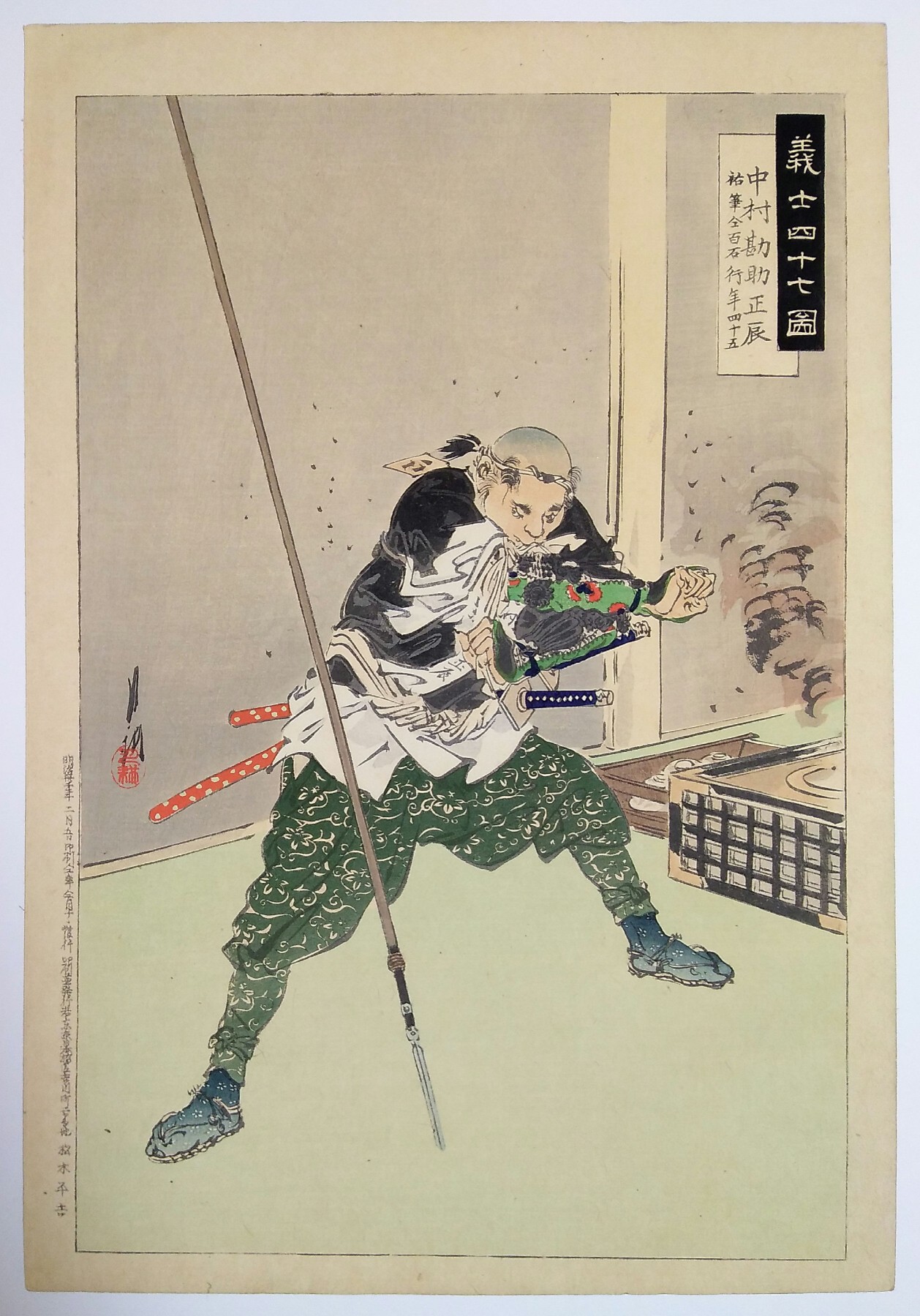
Nakamura Kensuke Masatoki
Forty-seven pictures of loyal retainers
Sold out
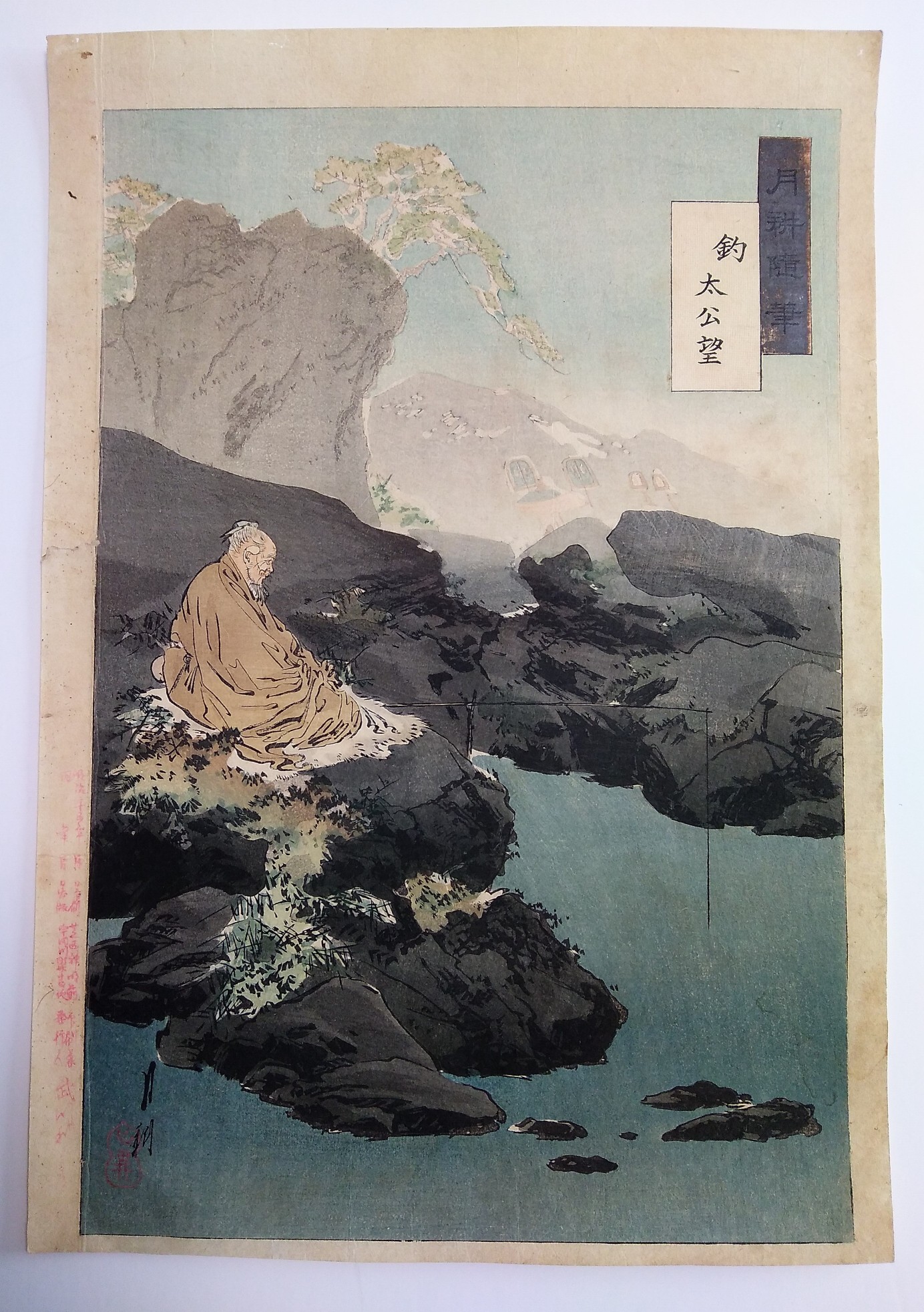
Fishing, Taikōbō
Gekkō zuihitsu
Sold out
